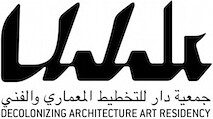On knowledge, inhabitation, and translocality
Khaldun Bshara, “Camps as Heritage”
The format for the nomination of properties for inscription on the World Heritage List indirectly allows for a critique of UNESCO by showing that one size does not fit all. Language has to change to allow other contents to be accounted for. Critical processes such as the Refugee Heritage project therefore contribute to the indefinite and continuous change of these institutions, these structures—like Palestinian camps, if I may say. A UNESCO nomination file serves, at the very least, as a documentation of the camp at a particular moment. The camp, we know, will change. The nomination file will need to be re-written. Its discursive (rather than dialectical) relation to heritage thus opens the possibilities of engaging with heritage as a medium for knowledge production beyond commodification, the market, and sustainability in simply an economic sense.
But the goal for completing the nomination form and making the process more responsive to local values and criteria was never truly the goal of Refugee Heritage. Rather, it has always been more about the failure of fulfilling this process. Failure, in this sense, is guaranteed, not only due to the pre-existing formats and institutional processes, but also because of political considerations both more widely and locally regarding the conception of camps as heritage. The failure exposed by Refugee Heritage is thus not of the form, but rather of the politics that brought camps into being for such a long time, and thus into the discourses of heritage, in the first place.
Ilana Feldman, “The Dheisheh Style”
Camp inhabitants cannot escape the contradictory pressures to be quiescent and defiant, to be settling into exile and preparing to return home, to maintain the camp as it was and to collaborate in its improvement. But they do find a distinct path through this terrain. Part one of the Refugee Heritage UNESCO dossier recounts a conversation between two refugees from Dheisheh that is revealing. Qussay, from the camp, but now living outside (“I am not living in Dheisheh, but I am from Dheisheh”) summed it up as “the Dheisheh style—the way things move.” Qussay was speaking to the political and social dominance of Dheisheh in the Bethlehem area, contrasting the energy of the camp to surrounding municipalities where both refugees and natives reside. But what is this Dheisheh style? And can it be preserved under the rubric of ‘refugee heritage?’ In part this style refers precisely to the political and social energy of the camp—the many NGOs, cultural organizations, and political activities that are located in and emerge from this space—but not just. It also refers to a way of living: the forms of relations with neighbors, the means of organizing commerce, and the manner of walking in the streets. All these things, this style, are part of why he also said: “when I leave home I come to Dheisheh … My relationship network is in the camp.”
Pelin Tan, “Camps as Trans-Local Commons”
According to Silvia Federici, commoning practices require community, which in itself is based on relations with the principles of cooperation and responsibility to one another. Examples like Pikpa camp in Lesvos—which serves more a space for safe passage rather than one of confinement—or City Plaza Hotel in Athens—an occupied space where refugee families and Greek activists together act as one—are thresholds evolving within co-existing communities. But in many refugee camps, ethnic identity and religion often act as the basis for community networks and formative relations. While this can result in social structures that leave certain inhabitants vulnerable, design can be used to ameliorate, or even subvert such conditions. Ezidi women in Çınar camp, for instance, are prohibited by their husbands to sit in front of their tents. As a response, they have built semi-public extensions to their tents from found materials like wood, blankets and humanitarian-grade plastic sheeting. While in different and at times conflicting ways, each of these cases demonstrate Federici’s claim that commoning practices not only have the ability to overcome vulnerability and precariousness, but also highlight the role of women in their becoming.
Refugee Heritage conversations is a collaboration between e-flux Architecture and DAAR (Decolonizing Architecture Art Residency)



